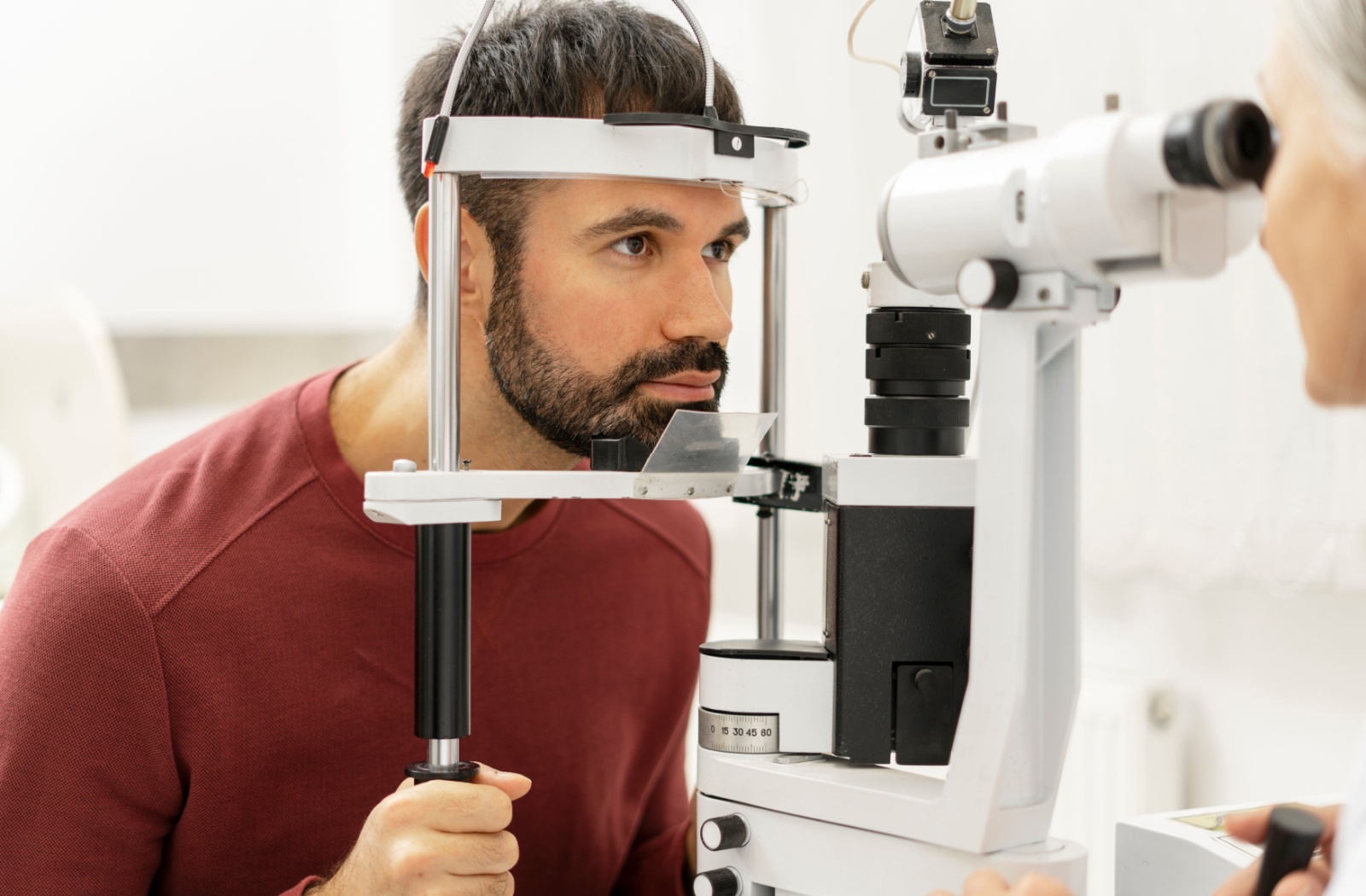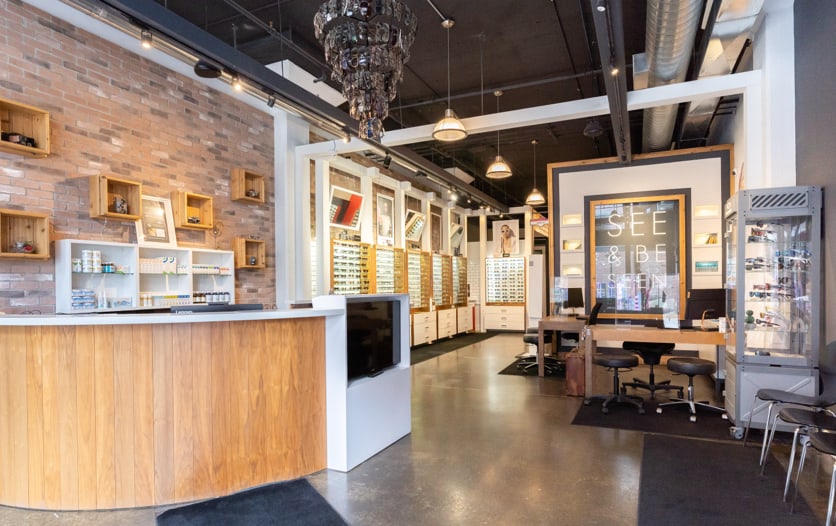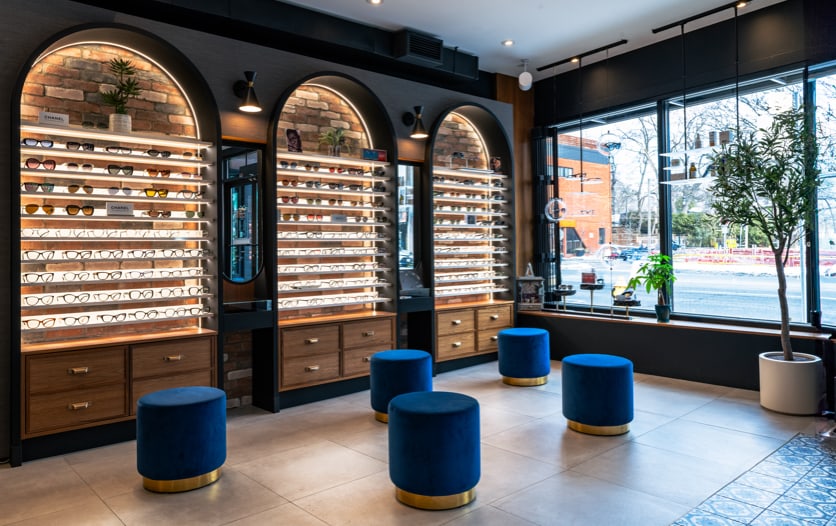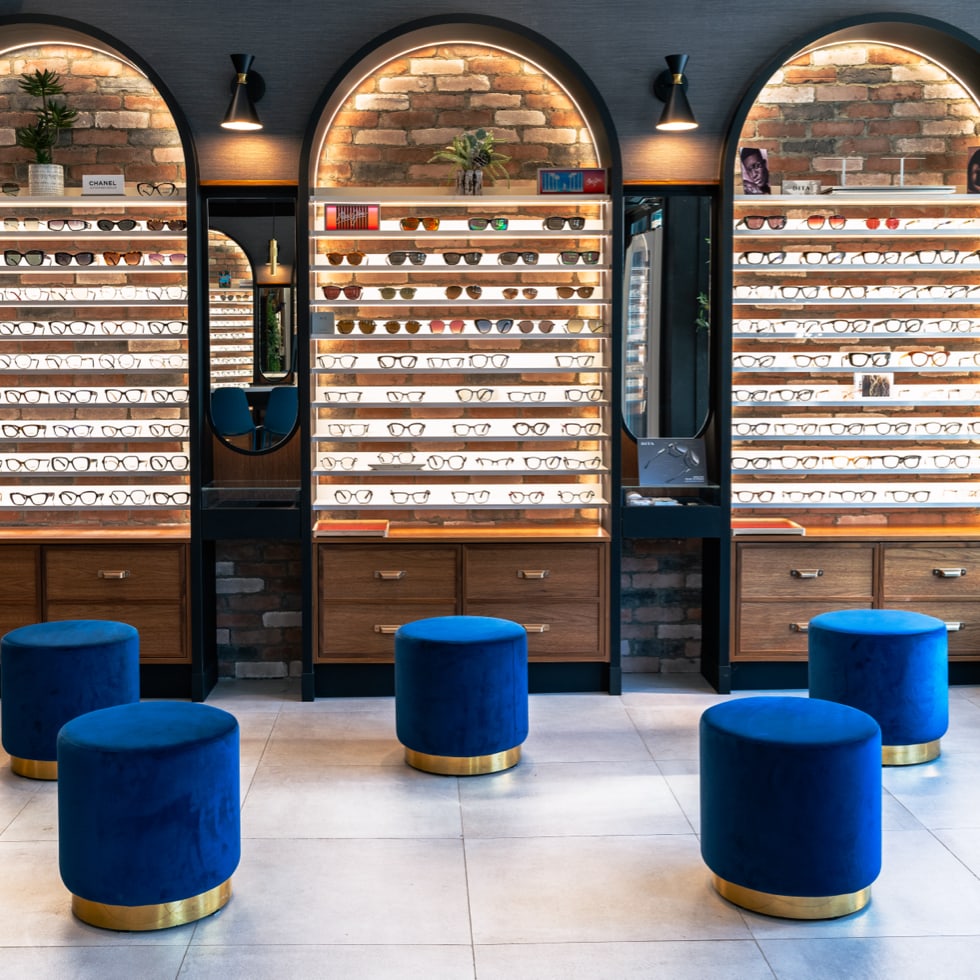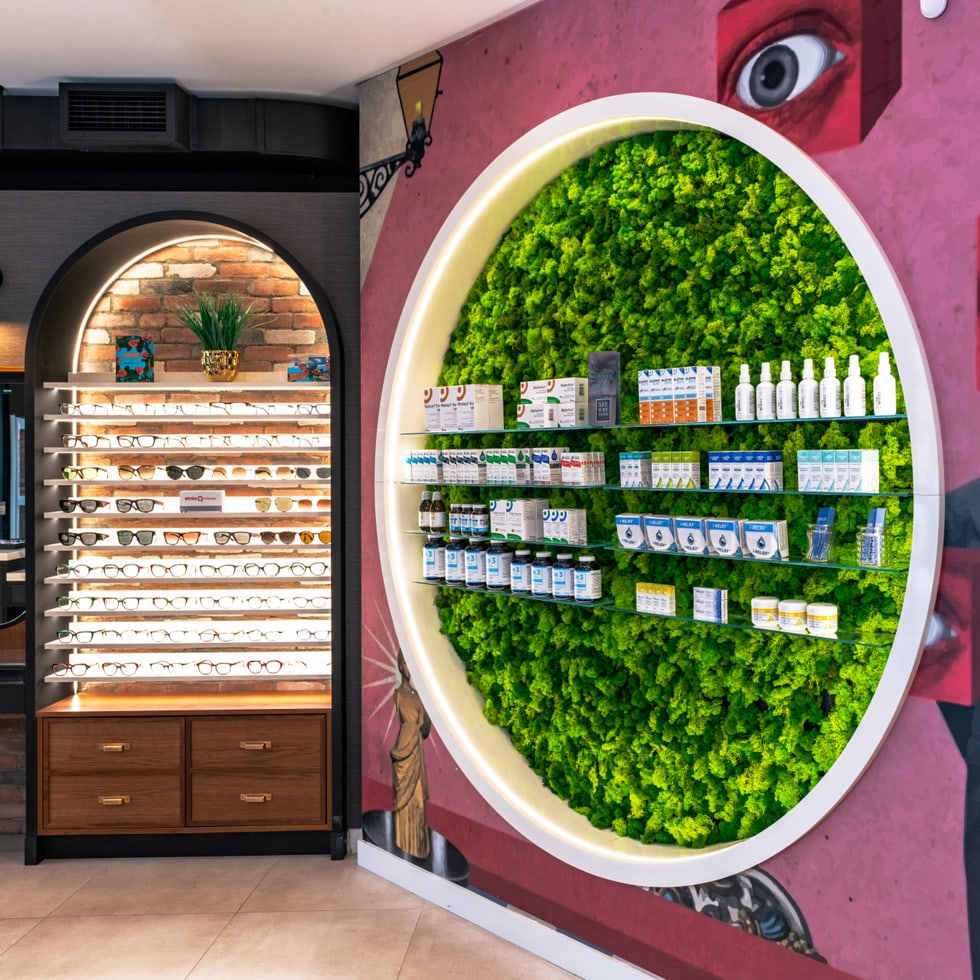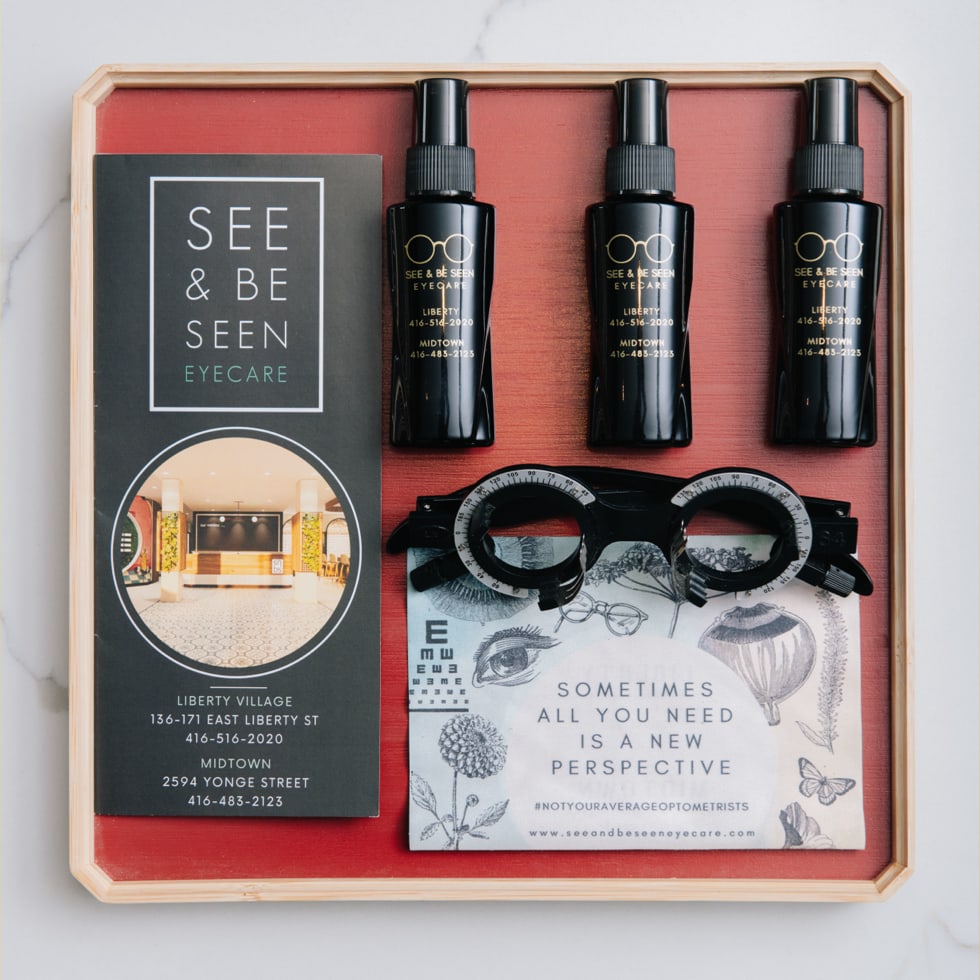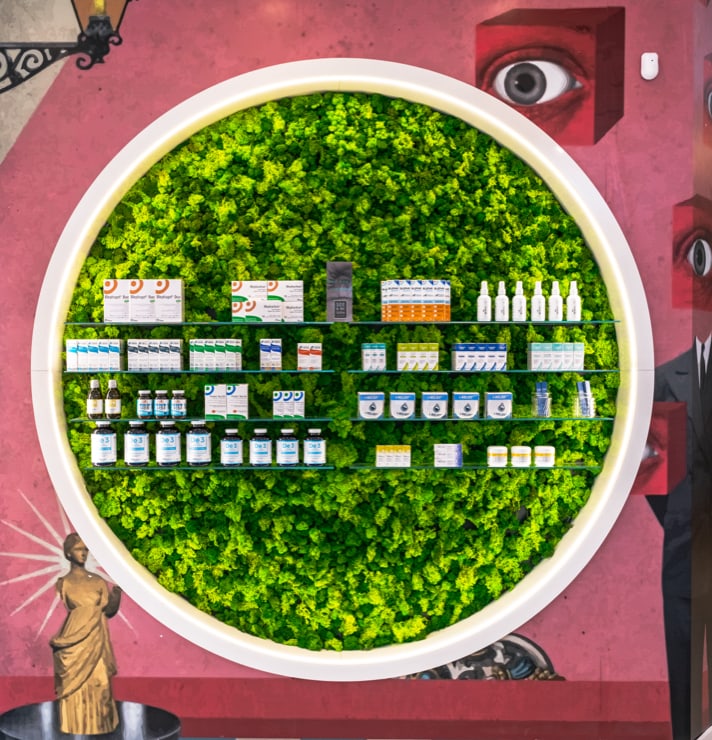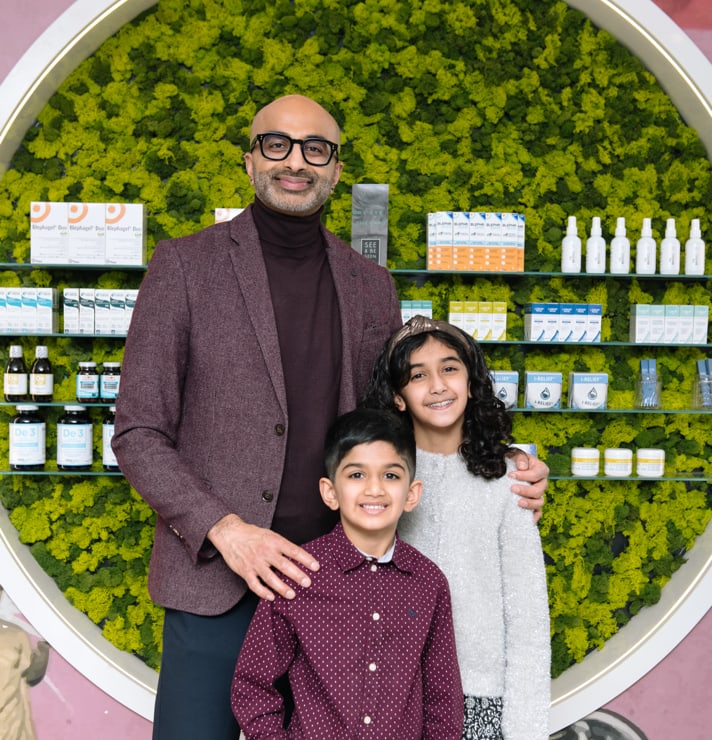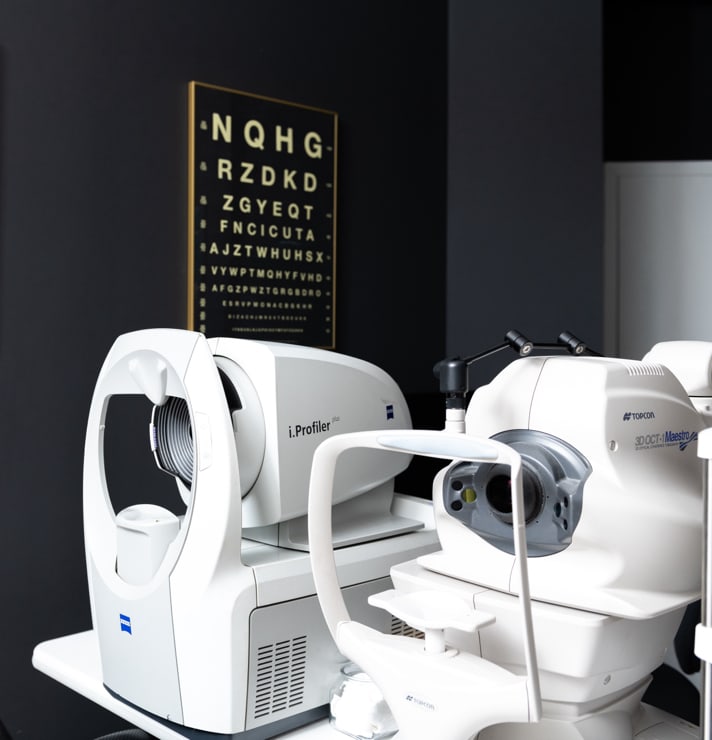Most people see their annual eye exam as just a vision check. But behind the simple letter chart is a significant preventive tool in modern healthcare. Routine eye exams can uncover serious health issues like diabetes, stroke risk, and even brain tumours, often before symptoms show up anywhere else.
Your eyes offer a unique view inside your body’s systems, allowing optometrists to detect changes that may signal more serious medical concerns.
Eye Diseases Caught Early Through Routine Exams
Your eyes are complex organs, and even subtle changes in their structure can signal the development of problems. Regular eye exams allow optometrists to track these changes over time and intervene before permanent damage occurs. Here are a few eye diseases that an early exam might detect:
Glaucoma
Glaucoma earns its nickname “the silent thief of sight” because it typically develops without early warning signs. This condition gradually damages your optic nerve, usually starting with peripheral (side) vision loss that you might not notice until significant damage has already occurred.
During your eye exam, we may use several modern tools to help detect glaucoma early. Tonometry measures the pressure inside your eyes, while visual field testing evaluates your peripheral vision. Our retinal imaging can capture detailed images of your optic nerve, allowing us to identify subtle changes in nerve fibre thickness and detect swelling or fluid buildup that may indicate the development of glaucoma.
Retinal Detachment
Retinal detachment occurs when the retina pulls away from the back of your eye—a condition that can cause permanent blindness if not treated immediately. However, eye exams can often detect early warning signs, such as small retinal tears or areas of weakness, before a full detachment occurs.
These early signs might be completely invisible to you, appearing long before you’d notice symptoms like sudden flashes of light or a curtain-like shadow in your vision. Early detection gives us the opportunity to refer you for preventive treatment that can save your sight.
Cataracts
While cataracts are commonly associated with aging, they can develop due to trauma, certain medications, or underlying health conditions. During your eye exam, we can detect early cataract formation when the lens just begins to cloud, allowing us to monitor progression and plan treatment timing.
Early detection means we can provide guidance on managing symptoms and determine the optimal time for cataract surgery, helping you maintain the best possible vision throughout the process.
Macular Degeneration
Macular degeneration affects the central part of your retina, which is responsible for sharp, detailed vision. Using innovative retinal scanning technology, we can identify early signs like drusen deposits or pigment changes in the macula long before you experience any vision changes.
Early detection is important because treatments to slow the progression of macular degeneration are most effective when started early, potentially preserving years of functional vision.
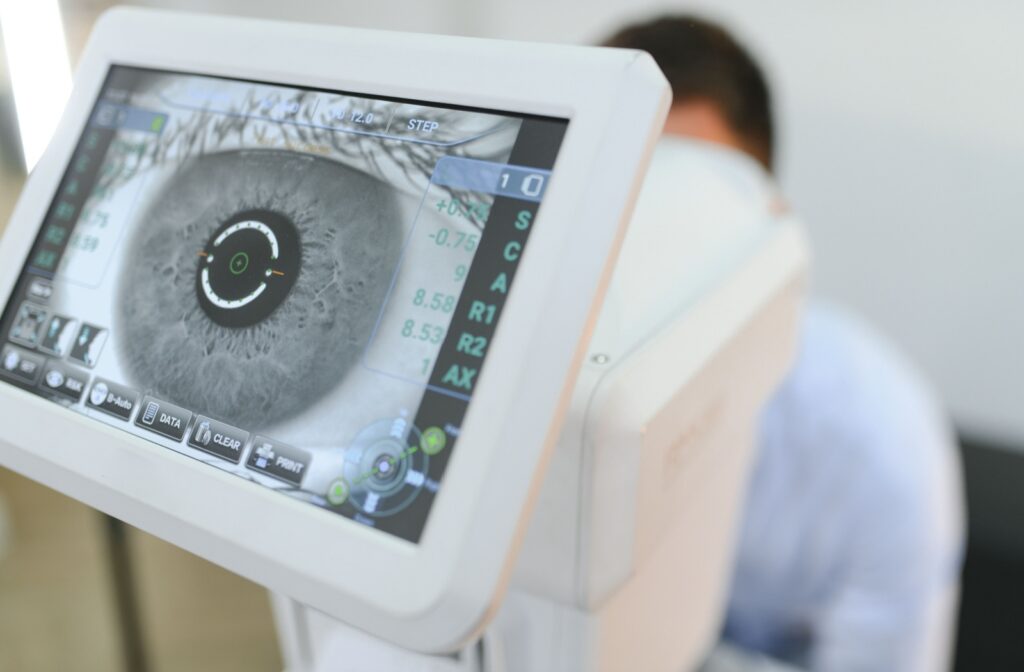
Systemic Conditions That Can Be Found in an Eye Exam
Beyond protecting your vision, eye exams can reveal systemic health issues that might not yet be causing symptoms elsewhere in your body. The blood vessels and nerves visible in your eyes often show the first signs of diseases affecting your entire system.
Here are just a few of the serious health conditions that can be detected during a routine eye exam:
- Diabetes: Early signs of diabetic retinopathy—like leaking or swollen retinal blood vessels—can appear before other symptoms of diabetes.
- Stroke risk: Blockages or reduced blood flow in the retina may indicate an increased risk of stroke or signal a previous mini-stroke.
- Eye and brain cancers: Abnormal growths or optic nerve swelling (papilledema) may point to eye cancer or a brain tumour.
- Autoimmune diseases: Inflammation or blood vessel changes in the eye may be early signs of conditions such as lupus, rheumatoid arthritis, or inflammatory bowel disease.
- Hypertension: Signs like narrowed vessels, bleeding, or cotton wool spots can reveal undiagnosed high blood pressure.
Even if you feel healthy, your eyes could be telling a different story. Regular eye exams are a simple but effective way to monitor your overall health and catch issues early.
Who Should Get More Frequent Eye Exams
While annual eye exams are a smart habit for everyone, some people may benefit from more frequent visits. Certain health conditions, lifestyle factors, or medications can increase your risk for eye and systemic diseases, making regular monitoring even more important.
You may need more frequent eye exams if you:
- Have diabetes or high blood pressure
- Have a family history of glaucoma or macular degeneration
- Are over age 60
- Take medications that affect the eyes
- Wear contact lenses or have had recent eye surgery
- Work in visually demanding or hazardous environments
Taking Action Early Matters
Your annual eye exam is a practical way to support your long-term health. It can reveal serious conditions early, when they are easier to manage and treat. Many health issues do not show symptoms until it is too late. Routine eye exams offer a straightforward way to stay ahead of potential problems.Book your exam at See & Be Seen Eyecare. Our team utilizes modern technology and takes the time to focus on your needs, as your eyes can reveal a great deal about your overall health.

